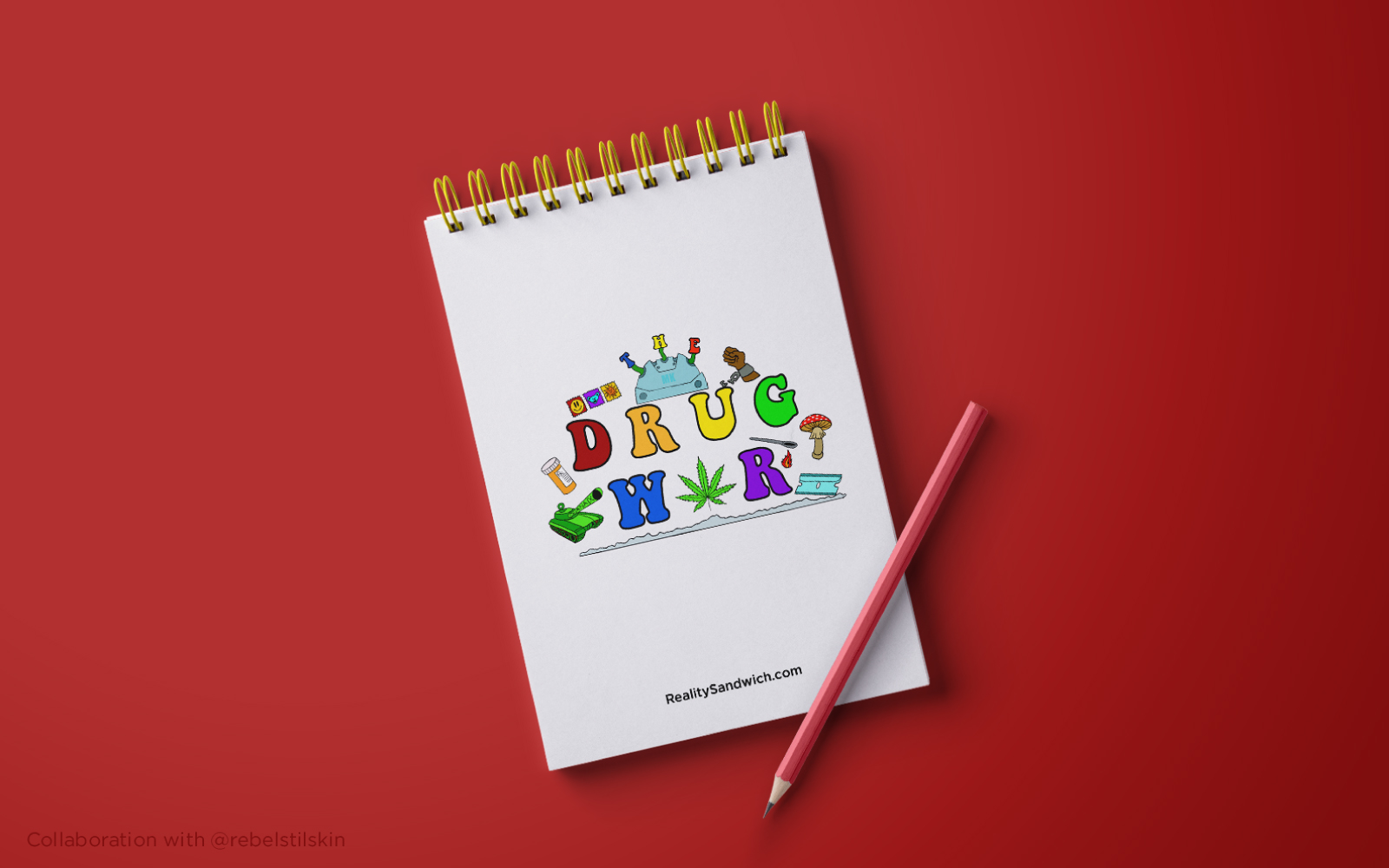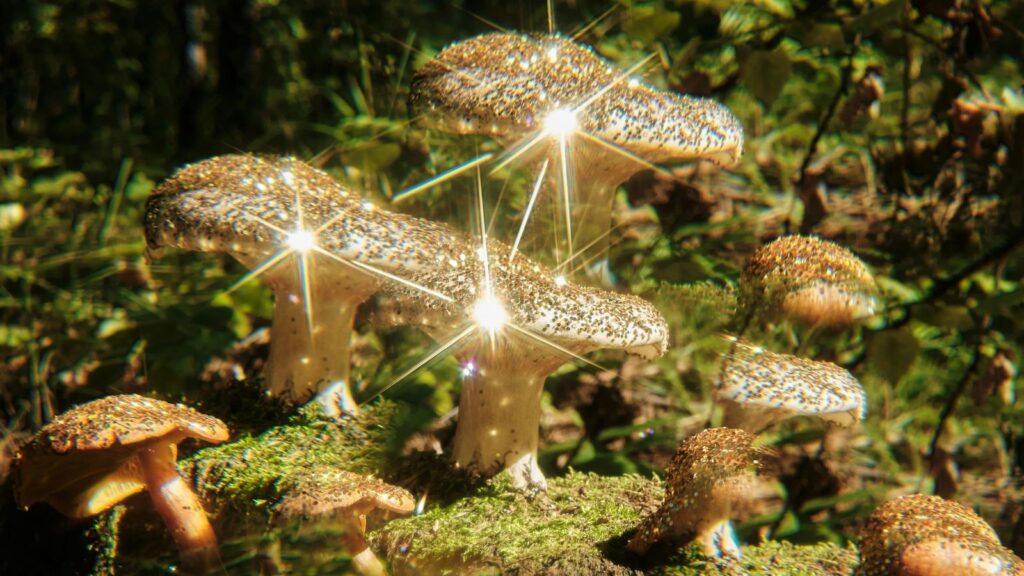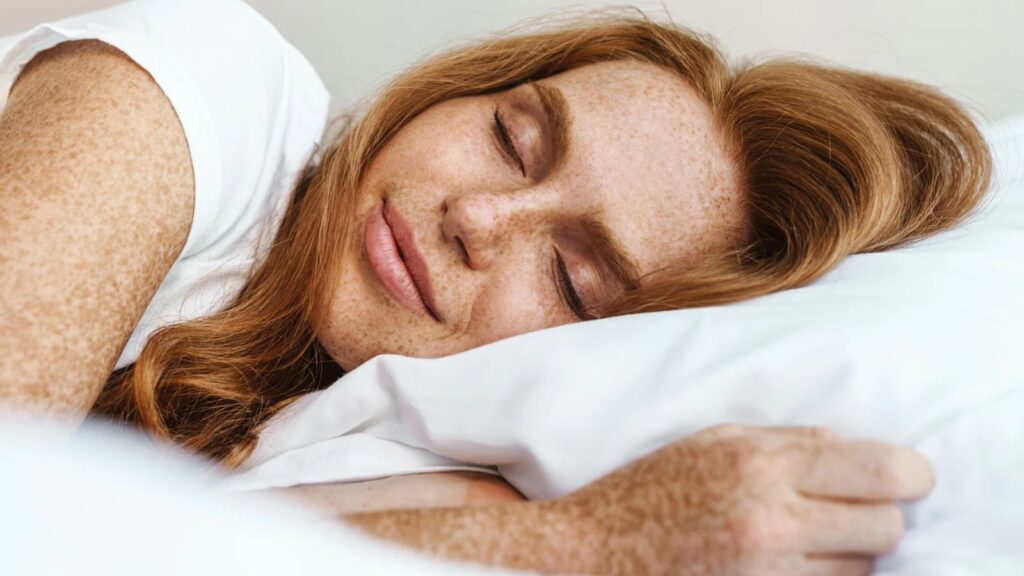Drug use is a public health issue, yet in the United States it is treated as a war. The “War on Drugs” refers to the United States’ domestic and global campaign of drug prohibition, criminalization, policing, military interventions, and policymaking that responds to the issue of drug use with the violence of the state. Since this declaration of war, federal and state legislatures have incentivized police departments by linking funding to the number of drug arrests, while underfunding programs and policies for drug addiction prevention and rehabilitation.
What is the War on Drugs?
The term originated in 1971 after President Richard Nixon gave a press conference in which he announced “America’s public enemy number one in the United States is drug abuse. In order to fight and defeat this enemy, it is necessary to wage a new all-out offensive.” By this time, however, the spirit and tactics of the war on drugs had already existed for at least half a century.
For over a century now, the policies and policing tactics around drugs have been enforced disparately by race, dramatically disproportionately affecting Black, Brown, and Indigenous communities and resulting in mass incarceration. Countless people have lived out their lives in cages as a result of unjustifiably punitive punishments for substance use. What’s more, organized crime and black markets have flourished as the trade has been driven underground. None of this mayhem, nor the trillion dollars spent on enforcing the Drug War over the last half century, has reduced actual drug abuse in the U.S. By all accounts the War on Drugs has failed catastrophically, unless you consider the possibility that what it has achieved—justifying state violence against a minority population and driving this population into the prison system—was its goal all along.
According to Natalie Papillion, Executive Director of The Equity Organization and expert in drug policy, “It’s been almost five decades since we declared a War on Drugs, and the only thing we have to show for it are overcrowded jails, decimated communities, and millions of people sentenced to a lifetime of poverty for the simple act of smoking a joint. Sadly—though predictably—this has done nothing to curb American drug use. In fact, by most accounts, illegal drugs are cheaper, purer and more readily available than ever before. Taking a public health—not a punitive—approach to drug use would save lives, restore the people’s faith in important public institutions and save countless time, money and resources.”
History
Many animals consume mind-altering substances in order to experience intoxication and human beings are no exception. Psychopharmacologist Ronald K. Siegel points out in his book Intoxication that the consumption of psychoactive compounds can be seen as a fourth biological drive, alongside food, sleep and sex. It is a practice that is observed in all human cultures and is present at all levels of contemporary society. Criminalizing a biological drive and enforcing the law in an uneven manner provides a perfectly diabolical method for society to harass and abuse its chosen scapegoats–all while pretending it has the moral high-ground and is acting out of a concern for public safety.
Harrison Act
In the early 20th century, drugs were legally available from American pharmacies. One could buy cocaine containing Coca-cola, opiate-containing cough syrups or tins of Bayer Heroin for pain relief. Drug consumption was considered normal and in no way a societal ill. The first major piece of legislation in the spirit of the War on Drugs was the Harrison Act, passed by Congress in 1914. It criminalized the sale and use of non-medicinal opium and cocaine.
Culturally, support for the Act was based primarily on racist moral panic against perceived Chinese opium use and perceived Black cocaine use, rather than on political will for addressing substance abuse as a public health issue. For decades on the west coast, industrialists had exploited Chinese immigrants for cheap labor in mines and railroad construction, while the white working class scapegoated the Chinese for their own depressed wages and economic woes. News media stoked racist sentiments with caricatures of Chinese immigrants as degenerate opium users. This attitude can be seen in the words of the founder of the drug war, Harry Anslinger, who believed that Chinese immigrants had developed “a liking for the charms of caucasian girls from good families” and were enslaving these girls in opium dens.
During this same period in the South, the maintenance of a rigidly enforced racialized social order remained of great importance to both the elite, who depended on an underpaid labor force, and poor whites, who benefitted from the social privileges at least afforded to them by their white skin. White supremacist and segregationist sentiment continued to prevail in the South, fuelling dehumanizing and mythological depictions of Black cocaine use around the country.
The New York Times reported that black “cocaine fiends” were a “new southern menace”. The story under this headline told of a black man in North Carolina who was “running amok in a cocaine frenzy”. The police chief fired into the man’s heart at point blank range “but the shot did not even stagger the man”, according to the officer. To a society that already has a fear of the “other” that it wishes to suppress and control, the prospect of the other routinely inhabiting altered states in which they would be disinhibited and therefore harder to control only serves to increase this fear.
The criminalization of substances promised to keep these populations under control, physiologically by banning certain drugs and physically by justifying their mass imprisonment. As Natalie Papillion puts it “many of our modern-day drug policies were born out of a desire to control this country’s minority communities. And there’s a long sordid history of illegal drug use—real or imagined—to criminalize, brutalize and all too often—kill—people of color.
The Bureau of Prohibition
The next major event occured in 1919 with the prohibition of alcohol. Around this time the predominantly protestant mainstream culture of American perceived the new Catholic populations arriving from Ireland and Italy as an un-American, alien influence. Compared to the culture of temperance amongst the protestants, these Catholic groups were associated with alcohol consumption. What’s more, their political organizing often took place in beer halls. Mainstream America responded to this internal fear of the Catholics by banning the consumption and sale of alcohol in the National Prohibition Act of 1919. This act would be repealed 14 years later when the added tax revenue from alcohol sales outweighed these initial motives.
The Bureau of Prohibition was founded in order to manage this new aspect of state control of the population’s behaviour. In 1929, an agent by the name of Harry Anslinger joined the Bureau of Prohibition. Anslinger can be considered as the father of the war on drugs, his influence is detailed in John Hari’s book Chasing The Scream. In 1930, as the era of alcohol prohibition was approaching its close, he became the founding commissioner of the Federal Bureau of Narcotics. Over the previous decade, prohibition had mapped out a new playbook by which the state could target, harass and imprison whichever groups of citizens it chose, by criminalizing whichever drug was associated with that group in the eye of the public.
From Alcohol to Cannabis
Following the legalization of alcohol, the energy of the now redundant work force of agents who had enforced prohibition was funnelled into the persecution of other groups, associated with other drugs. Despite having previously stated that cannabis was not harmful and that “there is probably no more absurd fallacy” than the idea that it produces violent behavior, Anslinger now fully embraced the opportunity to imprison Black Jazz musicians in the north and Mexicans in the south through the criminalization of cannabis.
Natalie Papillion argues “From the very beginning, the explicit goal of our country’s drug policies were to criminalize members of what Harry Anslinger—the father of American drug enforcement—believed to be ”the degenerate races””. Anslinger justified the criminalization with collections of anecdotes of cannabis consumption being linked to crime. On the other side was evidence and medical expertise. The American Medical Association compiled a report from thirty pharmacists and representatives from the pharmaceutical industry in which all but one disagreed with the ban. When faced with rationality and truth, the Bureau responded by simply striking this evidence from its files and continuing on its path, keeping only the dissenting voice on record. Instead of listening to evidence, Anslinger would instead launch explicitly racist campaigns to convince the public that cannabis criminalization was keeping them safe from the racialized other.
In a world where wealth is power, the U.S. had the ability to bully the rest of the world into joining its drug war so as to normalize the abuse it was, and still is, perpetrating on its citizens. At the U.N., countries that felt drug prohibition was the right policy for their country were threatened with having their aid programs pulled and their goods banned from export to the U.S., and were forced to comply. To understand drug prohibition anywhere in the world, it is therefore necessary to understand its roots in American white supremacy.
Civil Rights and Anti-War Movements
In 1954, the landmark supreme court decision in the case of Brown v. Board of Education ruled that it was unconstitutional to have segregated schools. In the years that followed, the civil rights movement that would reach its peak in the 1960s was born. As Michelle Alexander details in her book The New Jim Crow, at the same time another movement was being born, the movement imposed racial hierarchies through a narrative of “law and order”. This narrative came about in response to Martin Luther King’s calls for non-violent civil disobedience. The political nature of these protests routinely went ignored as they were instead characterized as nothing more than criminal behavior, a disingenuous strategy that is still widely employed by the enemies of racial justice, as we saw in the response to the protests of 2020. Then vice-president Richard Nixon explicitly linked the law and order narrative to the targeting of civil rights activists in his statement that the increase in crime observed at the time “can be traced directly to the spread of the corrosive doctrine that every citizen possessed an inherent right to decide for himself which laws to obey and when to disobey them”.
By the time Nixon came to the White House in 1969, the enactment of the Civil Rights Act had made it unconstitutional for drug criminalization policies to be explicitly racist as they had been in previous decades. The narratives of “law and order” and being “tough on crime” were instead used in order to criminalize and imprison people of color. As opposition to the Vietnam war mounted, this strategy was also used in order to imprison political opponents. Over the previous years, the hippie movement, associated with the use of LSD and cannabis, had emerged as an anti-war movement. The link between the use of specific drugs and the antiwar left made it possible for Nixon to conduct a program of state sponsored terror against these political rivals using the same ongoing strategies that were being used to terrorize, control and imprison the black population.
Top Nixon aide John Ehrlichman described the strategy in this way:
“You want to know what this was really all about? The Nixon campaign in 1968, and the Nixon White House after that, had two enemies: the antiwar left and black people. You understand what I’m saying? We knew we couldn’t make it illegal to be either against the war or black, but by getting the public to associate the hippies with marijuana and blacks with heroin, and then criminalizing both heavily, we could disrupt those communities. We could arrest their leaders, raid their homes, break up their meetings, and vilify them night after night on the evening news. Did we know we were lying about the drugs? Of course we did.”
In this way, the modern War on Drugs was born.
The 80’s
Over the following decades, the War on Drugs would continue to escalate. It reached its cultural crescendo in the 1980s amidst a moral panic around the use of crack cocaine. According to Natalie Papillion:
“We know now that the hysteria around the rise of crack use in this country was overblown, to say the least. In the late 1980s—arguably the height of anti-crack hysteria–the National Household Survey on Drugs estimated that less than one-half of 1 percent of the population over age 12 used crack once a month. However, the incessant, fear-mongering media coverage around the rise of crack was so full-on and hysterical that it successfully scared the country. Elected officials—sensing the ability to exploit these fears for their own political gain—leveraged their public platform to create a full-blown moral panic around drug use. Before the 1980s, our country’s incarceration rate was close to many other modern democracies. But the public and political response to this crack epidemic—caused the nation to rewrite its drug laws, lock up a record number of people and pour billions of dollars into drug-related policing and imprisonment. In the first 10 years after Congress toughened drug laws in response to crack, the number of people imprisoned for drugs grew more than 400 percent, nearly twice the growth rate for violent criminals.”
From the very beginning to the present day, the War on Drugs has always been about justifying the control and imprisonment of whole groups of people, rather than about protecting public health.
Propaganda
From the stories of “cocaine fiends” a hundred years ago to the image of the addict whose substance use is seen as entirely the result of their own moral failing, propaganda has always been aggressively used in order to demonize societies chosen scapegoats. If they can be made to appear as the other, a group to be feared and that must be controlled in order to keep the rest of us safe, then their abuse and exploitation by the dominant culture is more tolerable for the rest of society. The propaganda also taps into the fear for public health by inventing links between drugs and certain health issues, well captured in movies like “Reefer Madness” and newspaper headlines such as “Girl gives birth to frog: LSD to blame“.
President’s Stances
Nixon (1969-1974)
As the founder of the modern drug war, Nixon was responsible for a massive expansion of the power of federal drug control agencies who performed violent drug raids in communities across the country. Nixon made cannabis a Schedule 1 controlled substance, the most severe categorization for a drug, supposedly reserved for substances with no currently accepted medical use and a high potential for abuse. A commission he assembled in order to justify this move unanimously recommended decriminalization instead. As happened when cannabis was first criminalized, the advice of the experts was simply rejected and ignored.
Ford (1974–1977) & Carter (1977-1981)
When Gerald Ford took office in 1974, he deemphasised the War on Drugs. By the end of 1977 it seemed like the hostile culture was changing, the Senate Judiciary Committee voted to decriminalize possession of up to an ounce of cannabis for personal use, 11 states had decriminalized cannabis possession and President Jimmy Carter came to office on a platform that included cannabis decriminalization. This moment of optimism wouldn’t last long, however.
Reagan (1981-1989)
Ronald Reagan made the War on Drugs a defining aspect of his presidency. He came to power on a campaign that used dog-whistle racism to win over white voters in the south. Reagan launched his campaign near Philadelphia, Mississippi, where three civil rights activists were murdered in 1964, sending a clear message underneath the plausible deniability. We see these strategies are still employed today, as in the case of Trump scheduling a rally in Tulsa, where arguably the greatest anti-Black atrocity in post-slavery U.S. history took place, on Juneteeth, the anniversary of the end of slavery.
President Reagan escalated the War on Drugs using multiple strategies, including increasing anti-drug enforcement spending, creating a federal drug task force, and helping to foster a culture that demonized drug use and drug users. With her “Just Say No” campaign, Nancy Reagan pushed a narrative of drug use being the result of intentional, free choice and simple moral failure on the part of drug users, rather than the result of systemic inequality.
Reagan also imposed unjustifiably harsh sentencing for the use of drugs associated with the Black community. In the 80s, crack, a crystal form of cocaine that can be smoked, saw an increase in use. While cocaine use was associated with white people, crack use became associated with the Black community. While chemically the same drug as cocaine, Reagan imposed a hundred-fold greater punishment on crack possession than on cocaine possession. In 1986 he passed the Anti-Drug Abuse Act which introduced these a mandatory minimum sentence of five years without parole for possession of five grams of crack.
Obama
Obama’s first term showed few signs of being particularly progressive on the issue of drugs. In his second term however, Obama gave a speech in which he said:
“For too long we’ve viewed drug addiction through the lens of criminal justice…The most important thing to do is reduce demand. And the only way to do that is to provide treatment–to see it as a public health problem and not a criminal problem.”
Along with this rhetoric, in 2016 Obama pledged $1 billion for public health measures to tackle the opioid epidemic. Obama also used his presidential powers to pardon or commute the sentences of hundreds of incarcerated people, most of whom had been convicted of drug offences. Obama also did not intervene when states began legalizing cannabis. Despite these positive signs however, nothing like the substantial changes required in order to reform the criminal approach to drug use were implemented.
Trump
In the midst of the COVID-19 pandemic on April 1st 2020, Trump gave a speech in which he declared that we would be sending navy ships towards Venezuela in order to intensify the international front of the War on Drugs. According to Kassandra Frederique, Managing Director of Policy Advocacy and Campaigns at the Drug Policy Alliance, this was merely an attempt to “distract Americans from his delayed response to the COVID-19 crisis” [1]. While the Trump administration has not made drug use a major concern for its term in office, inaction on the issue allows the same problems to be perpetrated. In the midst of the pandemic, people who are currently incarcerated in the federal system on drug charges have been dying from COVID-19 due to prison overcrowding and abusive policies such as making them pay for access to soap.
Key Statistics
How Much Money has been Spent on the War on Drugs Since 1971?
According to the Center for American Progress, the U.S. has spent approximately $1 trillion on the war on drugs. In 2015, the cost was $3.3 billion a year, breaking down to $9.2 million a day.
How Many Arrests have been Related to the War on Drugs?
Someone is arrested for drug possession every 25 seconds in America. The number of arrests for possession has risen from almost half a million in 1980 to 1.3 million in 2015. In 2018, there were 1.6 million drug-related arrests, according to the FBI. The Center for American Progress reports that 20% of current incarcerated people are serving time for drug related offenses. This is equivalent to almost half a million people, with another million further citizens being controlled through probation or parole following prosecution for a drug charge.
Social Impact
Race and Inequality in the War on Drugs
The War on Drugs is designed to be unjustifiably punitive or people of color. While Black Americans make up only 12.5% of drug users, they comprise 30% of drug arrests [2]. Black Americans are four times more likely than white Americans to be arrested for possessing cannabis [3]. Almost 80% of current incarcerated people serving time for drug-related offenses are Black or Latino [4].
People of color are also systematically penalized more heavily than the white population. Nonviolent drug offenses by Black Americans are sentenced with roughly the same severity as violent crimes committed by white Americans (58.7 vs 61.7 months) [5]. For the same offense, prosecutors are two times more likely to pursue a mandatory minimum sentence if the defendant is Black than if they are White, resulting in 70% of those receiving a mandatory minimum sentence being people of color [4]. Even after sentencing, Black Americans are less likely to receive relief from these mandatory minimum sentences [6].
War on Drugs Policing and Police Brutality
Treating citizens as enemies in a war rather than people who are charged to protect increases the likelihood that interactions between the public and police will result in police brutality. Special Weapons and Tactics (SWAT) style raids, and stop and frisk policies create an environment in which a drastic power imbalance makes police brutality more likely. One study interviewed the victims of police brutality that occurred under the guise of War on Drugs policing [7]. The researchers identified multiple forms of harm that were inflicted. Psychological harm occurred as the result of power being wielded over them in the form of stop and frisk searches that occurred for no reason, and by racist insults from the police during such incidents. The researchers also found that gratuitous physical and sexual violence could be perpetrated against citizens by police during such searches. Such violence included beatings that broke the citizens ribs and teeth. None of the participants were actually arrested following the beatings, in line with the gratuitous nature of such brutality.
Safety Concerns from the War on Drugs
Males who inject drugs are the most likely to be subject to gratuitous police brutality [7]. A climate in which people with health issues such as addiction can be freely physically brutalized by police is not conducive to drug users keeping themselves safe. In addition to the harms inflicted by police, and by arrest and imprisonment, the environment of criminalization makes it hard for drug users to practice basic harm reduction. People cannot easily access clean needles or testing facilities to ensure the identity and purity of the substance they plan to consume. Pushing the drug trade underground also ensures that the quality of substances will be compromised and sometimes being adulterated with dangerous substances.
The Law, Our Rights, and the Drug War
American law began in the Declaration of Independence as a stand for two ideals–equality of all people before the law, and liberty within the law to pursue our own version of life and happiness. The liberty the early Americans sought was not the freedom to do what we please, but the freedom from government control over what should, or should not please us. The U.S. Constitution was drafted with this end in mind, and aims to give the government general control in public matters, but give the people general liberty in private matters.
The War on Drugs came as part of a broader trend where the federal government took total authority over how all food and medicine is sold. Prohibition of certain substances was part of the general regulation of all substances people consume. This policy move effectively became an assault on the private liberty the Declaration and Constitution aimed at preserving.
Because liberty is the protection of what a person gets to choose, there can be no real liberty without personal liberty. It is impossible to name any right more individual or intimate than the right to decide what goes into our bodies. The law infringes personal liberty when it prevents us from making reasonable decisions regarding our own health and diet. Law crosses a similar line when it regulates our intimate affairs and family life. It stands to reason that if liberty means anything it means that how we eat, sleep, and care for ourselves cannot be controlled by law.
The laws supporting the drug war crossed these private lines and brought the police power of the state to bear on nearly any decision we make regarding our diet and health. While reasonable regulation is based on a trust in facts, prohibition is a form of institutionalized distrust in people. It says that nobody can be trusted with any amount of certain substances. This distrust has left our leaders and courts blind. Prohibition has choked valid scientific inquiry into taboo substances and left out policy uninformed by either data or reason. And laws that distrust people appear to make people distrust the law. The use of controlled substances has steadily risen over the course of the drug war. So has the distrust of the police power of the government. We can’t be sure the government won’t invade our private lives because it has made our private lives so much of its concern.
The taboos created and enforced by prohibition have also served to remove reason from our conversations surrounding medicine. Sanctioned drugs have been distributed without question, leading to widespread addiction. Unsanctioned drugs have been demonized and their users ostracized and imprisoned, leading to mass incarceration. Prohibition and the fear of sanction effectively forced candid conversations about drugs into secrecy. The divide between what was done and what was illegal was so great that people were rarely able to speak openly about drugs, even within their own families.
Fortunately, as the drug war slowly comes to an end, there is a great opportunity to expand liberty. Our system requires us to assert rights in order to secure them. As people begin to reasonably exercise their liberty to reasonably use beneficial substances, and by asserting our personal rights, the courts and lawmakers are bound to take our liberty more seriously. As the fear of prosecution subsides, candid conversation will return. As we are doing now with substances like cannabis, we will soon be allowed to put data and reason at the center of the conversation regarding how it might help us pursue happiness. As that conversation develops, so will our liberty. The Constitution was designed to reflect our most basic values as we become more conscious of how the law should be limited to allow for liberty. As we claim Constitutional authority for our freedom, our right to pursue happiness will fall in line with our consciousness of substances and practices that help us in that pursuit.
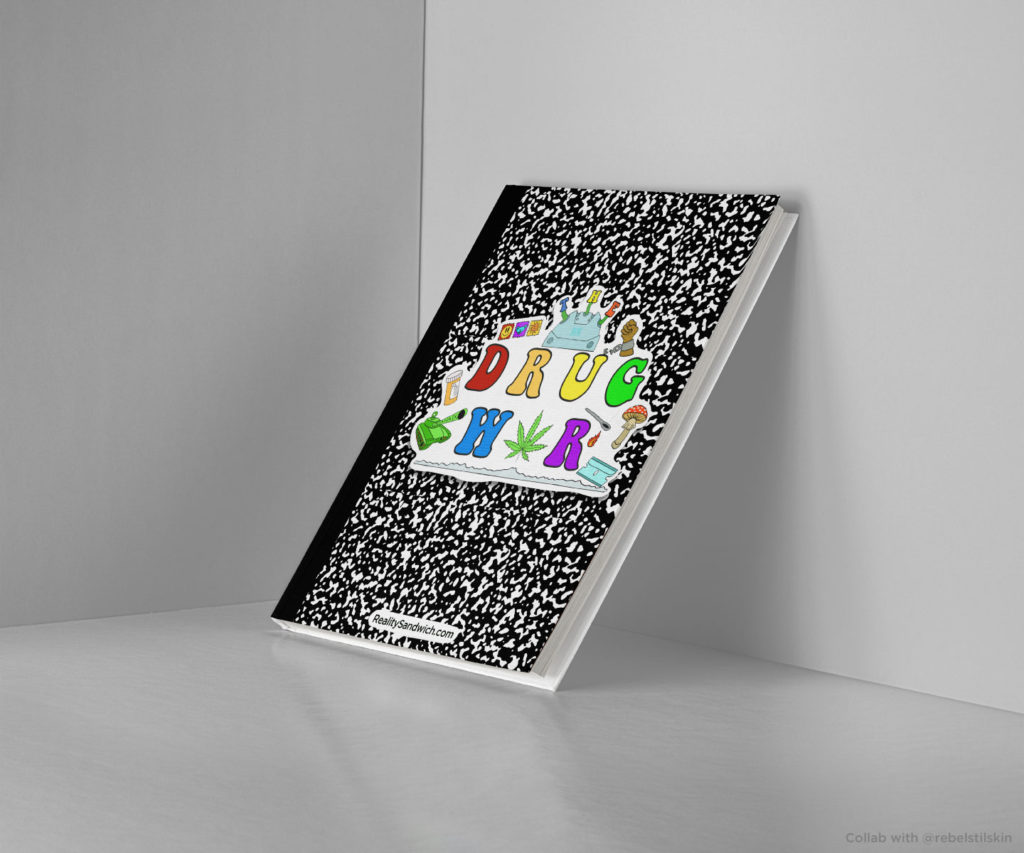
FAQ
What percentage of crimes are drug related?
Based on data from the Prison Policy Initiative, approximately one in five persons currently incarcerated in federal or state prison and in local jails are detained for crimes that are drug related. Drug possession arrests in the USA reach over 1 million each year. [8].
What is the Colombian Drug War? *
By the late 90s, Colombia had been in a state of civil war since the 60s and was the number one exporter of cocaine to the United States. In 1999, Clinton expanded the War on Drugs to the international stage, taking the war to Colombia where it was targeting the drug cartels. “Plan Colombia” as it was called also represented an extension of the cold war as it also aimed to suppress left-wing revolutionaries active in Colombia.
What is the Mexican Drug War? *
After the fall of Pablo Escobar’s Medellín Cartel and the associated Cali cartel in Colombia, Mexican cartels became one of the dominant exporters of cocaine to the U.S. along with South America and the Caribbean. By 2008, the U.S. was backing the Mexican government in their fight against the cartels in the same way as they had done in Colombia.
*It should be noted that only those inside the U.S. State Department call these efforts the “Colombia Drug War” or the”Mexican Drug War”.
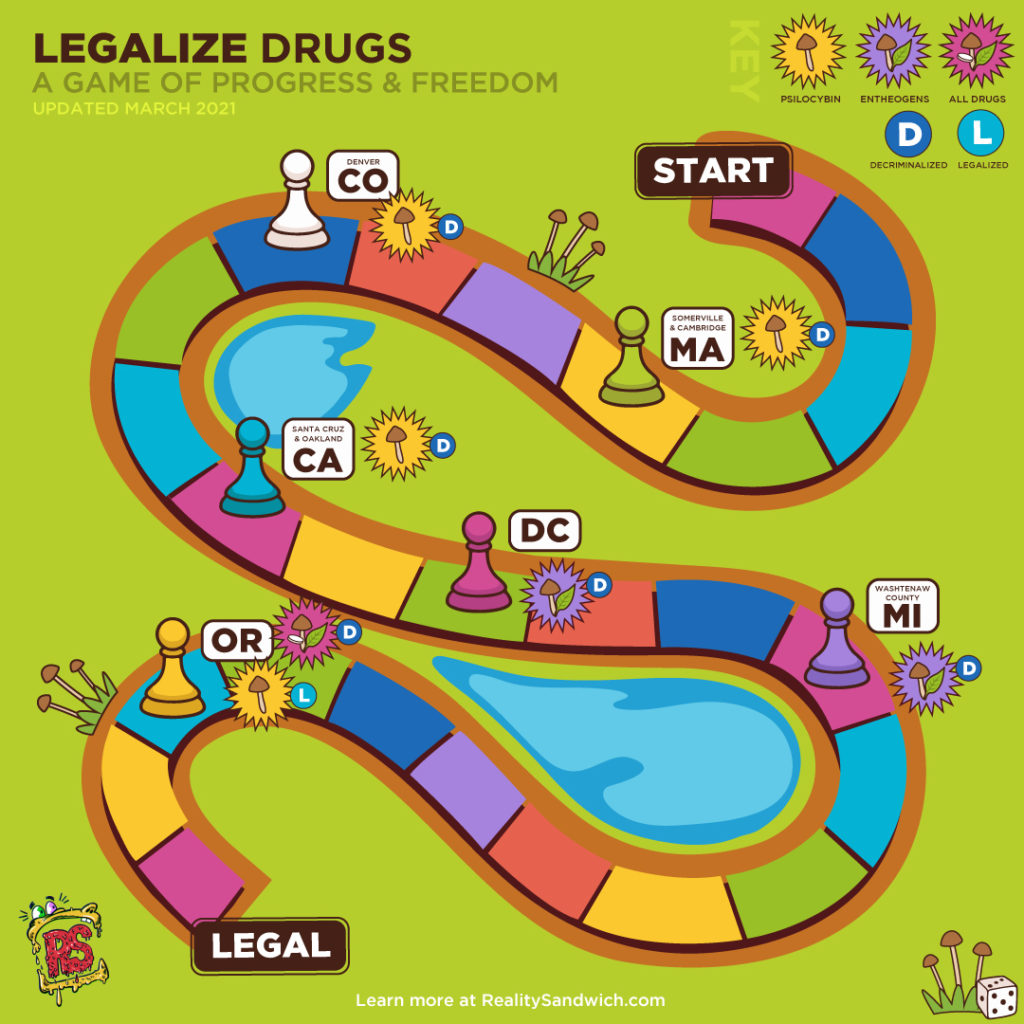
Supporting Contributors
Jared Coleman
As an attorney at Coleman & Associates, Jared oversees contract and litigation matters. He focuses on representing growing businesses and entrepreneurs with fundraising, contracts, corporate, corporate governance, business transactions, regulatory compliance, and business development matters. His litigation expertise includes land-use litigation, administrative and regulatory proceedings, writs and appeals, criminal defense, civil rights, and other constitutional litigation statewide. Jared received his Bachelor of Arts in Philosophy from Brigham Young University and a Juris Doctorate in Law from New York University School of Law.
Kalleb Arefaine – Artwork
California based artist, Kalleb Arefaine has been honing his skills in “psychedelic pop art” as what he would call it, for the past ten years, and videography since he was twelve years old. Originally a graffiti artist, Kalleb blended his psychedelic experiences on canvases and clothes creating perfect hallucinogenic artwork. Kalleb’s work is highly focused on bright colors, and happiness. His work is very fun, interactive and easy going. You can see that he is on a mission to redefine psychedelic imagery, take it away from the world’s concept of psychedelics being a bad “drug”, and more into a space of art therapy, consciousness and a colorful life. You will be transported to another time. If you like 60s culture, experimental sounds of house music, and colorful imagery, then you will love his work. A magical experience of illusion and consciousness for the whole world. The kids will be fascinated and the adults will be enthralled.
References
[2] http://www.naacp.org/criminal-justice-fact-sheet/
[4] http://www.drugpolicy.org/issues/race-and-drug-war
[7] Cooper HL, Moore L, Gruskin S, Krieger N. Characterizing police violence: Implications for public health. American Journal of Public Health. 2004;94:1109–1118.
